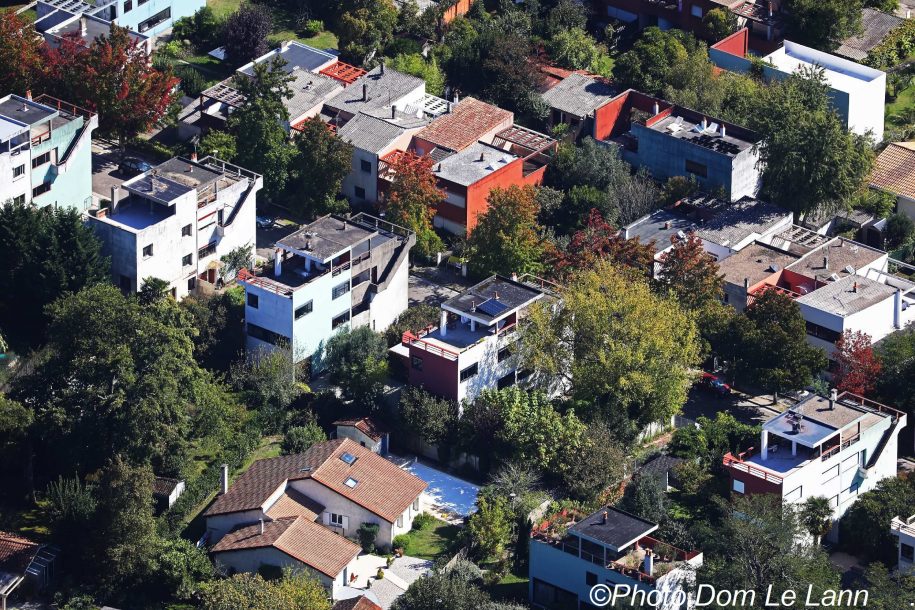La Cite Fruges, nestled in the Pessac area of Bordeaux, is a creation of the Swiss architect Charles- Edward Jeanneret- Gris known to the world as Le Corbusier in collaboration with his cousin Pierre Jeanneret. It was built between 1924 and 1926 by order of a local sugar manufacturer – Henry Frugès who was aiming to create a new type of social housing and provide a better quality of life for the factory workers in the area. Their ideas aligned perfectly as Le Corbusier had always been interested in creating modern architectural living spaces underlining their efficiency and comfort.
After the Bordelais industrialist bought the land for his dream city it was clear to him – construct an urban space, covered with greenery where a Utopian society could coexist in collaboration and peace. Le Corbusier drew the plans for this ideal community using clean lines with geometrical precision and with the help of simple shapes. This was also the first time he added color to his creation – creating polychromy. Initially, the houses were white, but Frugès was not happy with the idea, maybe because they looked like a cube of sugar to him. For this project, the artist also applied his architecture manifesto “five points of modern architecture.”
Le Corbusier used a standard module with the 5×5 dimensions, plus a half module that was reapplied to create various combinations to make the construction of his houses cheaper and more efficient. The plan called for the construction of 127 houses but only 51 were actually erected due to the bankruptcy of Fruges. There were seven principal types of houses – “the skyscraper”, “the arcade houses”, “the zigzag house”, “the staggered”, “the isolated house” called Vrinat, “the twin houses” and there was one final type but it was destroyed during the second world war.
In 1983 The City of Pessac bought one of the Skyscraper houses. It went through renovations as did other houses in the neighborhood. The city is listed, along with 16 other architectural works by Le Corbusier, on the UNESCO World Heritage list in 2016.
La Cite Frugès – Utopian architecture


Leave a Reply
You must be logged in to post a comment.